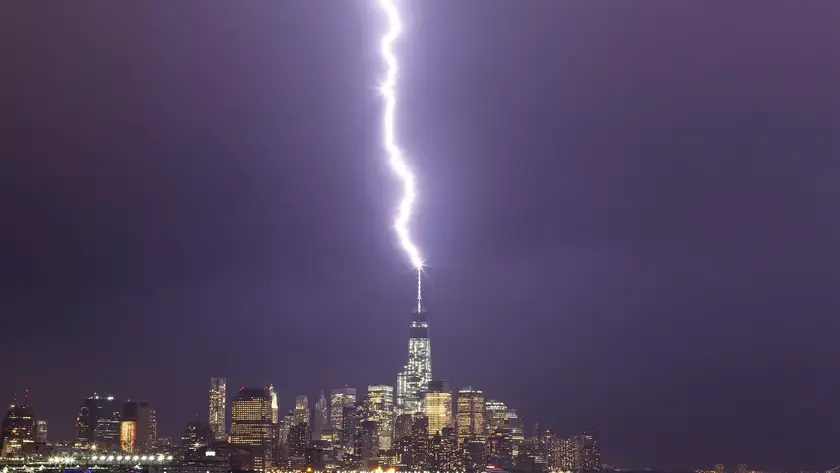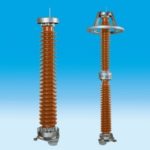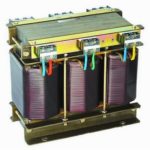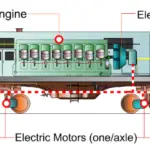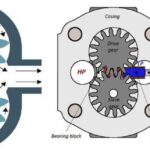Misunderstandings have often surrounded lightning rods, leading many to believe that these devices possess the ability to clear storm clouds or prevent lightning altogether. However, their true function is more nuanced and essential. In this article, we will demystify lightning rods, shedding light on their actual purpose and historical context, particularly their connection to the pioneering work of Benjamin Franklin.
The Science Behind Lightning:
Lightning’s origin, though visually captivating, arises from tiny ice and water particles colliding within thunderclouds. This collision induces electric charges, eventually resulting in the impressive lightning strikes we witness during thunderstorms. It is crucial to recognize the destructive potential of these lightning bolts, as they can ignite fires, damage structures, and pose risks to human safety.
Given the formidable force of lightning, the need for lightning protection systems becomes evident. Lightning rods, often considered the cornerstone of these systems, offer protection against the unpredictable nature of lightning, underscoring their importance.
Benjamin Franklin’s Early Lightning Rod Concept:
Turning our attention to the historical context, we find Benjamin Franklin, a prominent figure of his time, immersing himself in the scientific inquiry surrounding lightning. In the 18th century, understanding lightning was a nascent endeavor, and Franklin’s curiosity led to groundbreaking insights.
Franklin’s proposition, articulated in a letter published in the Gentlemen’s Magazine in May 1750, was revolutionary. He proposed the use of iron rods, pointed like needles, to gently draw the electrical charge from thunderclouds, ultimately preventing lightning strikes. This early concept laid the foundation for what we now recognize as the lightning rod. However, it is imperative to note that Franklin’s original belief in the complete dissipation of lightning through these rods was eventually corrected.
How Lightning Rods Actually Work:
Contrary to the initial misconception that lightning rods disperse lightning from the vicinity of structures, their function is more nuanced. Lightning rods do not eliminate lightning but redirect it in a manner that ensures safety.
To achieve this redirection, a lightning rod initiates an electrical discharge, resembling a miniature lightning bolt. This discharge extends upward to meet the incoming lightning, creating a safe path for its dissipation. Importantly, this discharge process occurs only during the final moments of the lightning’s trajectory towards the ground. Moreover, the relative height of the lightning rod plays a pivotal role in attracting the lightning and ensuring its interception.
It is crucial to understand that lightning rods do not guarantee absolute protection. Lightning can occasionally strike even the most well-protected structures. Nonetheless, properly implemented lightning rod systems significantly reduce the risks associated with lightning strikes.
Components of a Lightning Rod System:
A comprehensive lightning rod system comprises several essential components, each playing a vital role in its overall effectiveness.
Lightning Rods: Lightning rods, installed on rooftops or other elevated positions, serve as the primary attractors of lightning strikes. These rods can be constructed from various materials, such as copper, aluminum, or galvanized iron, with the choice influenced by corrosion resistance.
Lightning Rod Wires: These wires link the lightning rods, creating a network that facilitates the safe transmission of the electrical charge from the rods. They also function as interceptors for lightning strikes that might bypass the rods. Material selection, typically aluminum or copper, is guided by industry standards.
Grounding Arrangement: The grounding system connects the lightning rod network to the ground, enabling the safe dissipation of the electrical charge. Grounding can be achieved through buried rods or conductors, ensuring that the lightning’s energy is harmlessly routed away from structures.
Conclusion:
In conclusion, lightning rods epitomize a critical facet of our defense against the formidable power of lightning. While they cannot eliminate the risk entirely, their sophisticated operation diverts and mitigates the danger, offering invaluable protection. Understanding the science and history behind lightning rods underscores their significance in safeguarding lives and property during thunderstorms.
